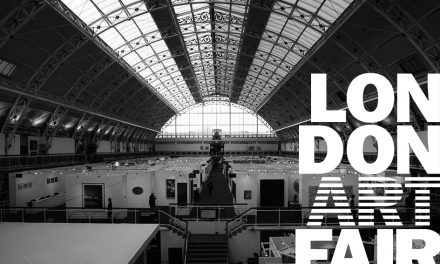With all eyes set on the Brazilian world cup, there’s never been a better time to explore the groundbreaking artistic movements that emerged across South America between the 1930s and 1970s. The 5th of July the Royal Academy of Arts opens Radical Geometry: Modern Art of South America from the Patricia Phelps de Cisneros Collection, an exhibition focused on this dynamic period that produced some of the most original art of the last 100 years. We have talked to its co-curators Adrian Locke and Gabriel Perez Barreiro to give you a sneak peek.
With all eyes set on the Brazilian world cup, there’s never been a better time to explore the groundbreaking artistic movements that emerged across South America between the 1930s and 1970s. The 5th of July the Royal Academy of Arts opens Radical Geometry: Modern Art of South America from the Patricia Phelps de Cisneros Collection, an exhibition focused on this dynamic period that produced some of the most original art of the last 100 years. We have talked to its co-curators Adrian Locke and Gabriel Perez Barreiro to give you a sneak peek.

Gego’s Sphere, 1976. Courtesy of Fundación Gego
“Geometry is back, people are acquiring a taste in the matter. If you were to look back 10-20 years people would have had a heart attack. But now it is different,” commented Perez Barreiro. “When we were students, studying this material was not accepted. Everyone was following the standards. The paradigm has changed so much. There’s a huge shift, change in the market.”
The works in this exhibition go beyond their geometric aesthetic. They draw inspiration from music and rhythm, explore the science and beauty of colour, and toy with the psychology of ‘viewing’. The result is a sensorial experience that challenges the notions of art.

It was a time when Europe was no longer a reference to aspire to, submerged as it was in its world conflicts. These artists felt that it was their turn to design the nature of art and its place in the world. They understood it was their turn to step up and pick up where others left off, developing movements further in their course.
“At that time, (South) America was part of the world with a generation looking for new ideas. One of the beauties of this exhibition is that you can trace back, it lays out things chronically and you can view all of the connections. It’s not something new, it’s all linked”, explained Locke.

Joaquín Torres-García’s Construction in White and Black, 1938. Courtesy of the Museum of Modern Art, New York.

Juan Melé’s Irregular Frame No 2, 1946.
What they all shared was the use of a modern, visual language to capture the sense of optimism and social change that they were clamouring for within society. “As a group they were very linked and saw art as something much more powerful. A power to harness the modernism and the progressive nature of their countries. Those situations changed quite radically, and perhaps that’s why it’s not so well known.”, commented Locke.

Alfredo Hlito’s Chromatic Rhythms II, 1947. Courtesy of Sonia Henríquez Ureña de Hlito.
“I think people are going to be interested in the materials these artist liked so much, be touched with their magic. It’s something that they haven’t experienced before. A vibrant body of work by a group of incredibly impressive artists that they probably have not heard of.”
Lygia Clark currently has a retrospective at the MoMA and there is an upcoming Gego exhibition at the Henry Moore Foundation we are really looking forward to. The time has come for the world to look more closely at this compelling group.
Venue: Royal Academy of Arts. Burlington House, Piccadilly, London W1J 0BD
Dates: 5 Jul 2014 – 28 Sept 2014
Info: https://www.royalacademy.org.uk/exhibition/23











